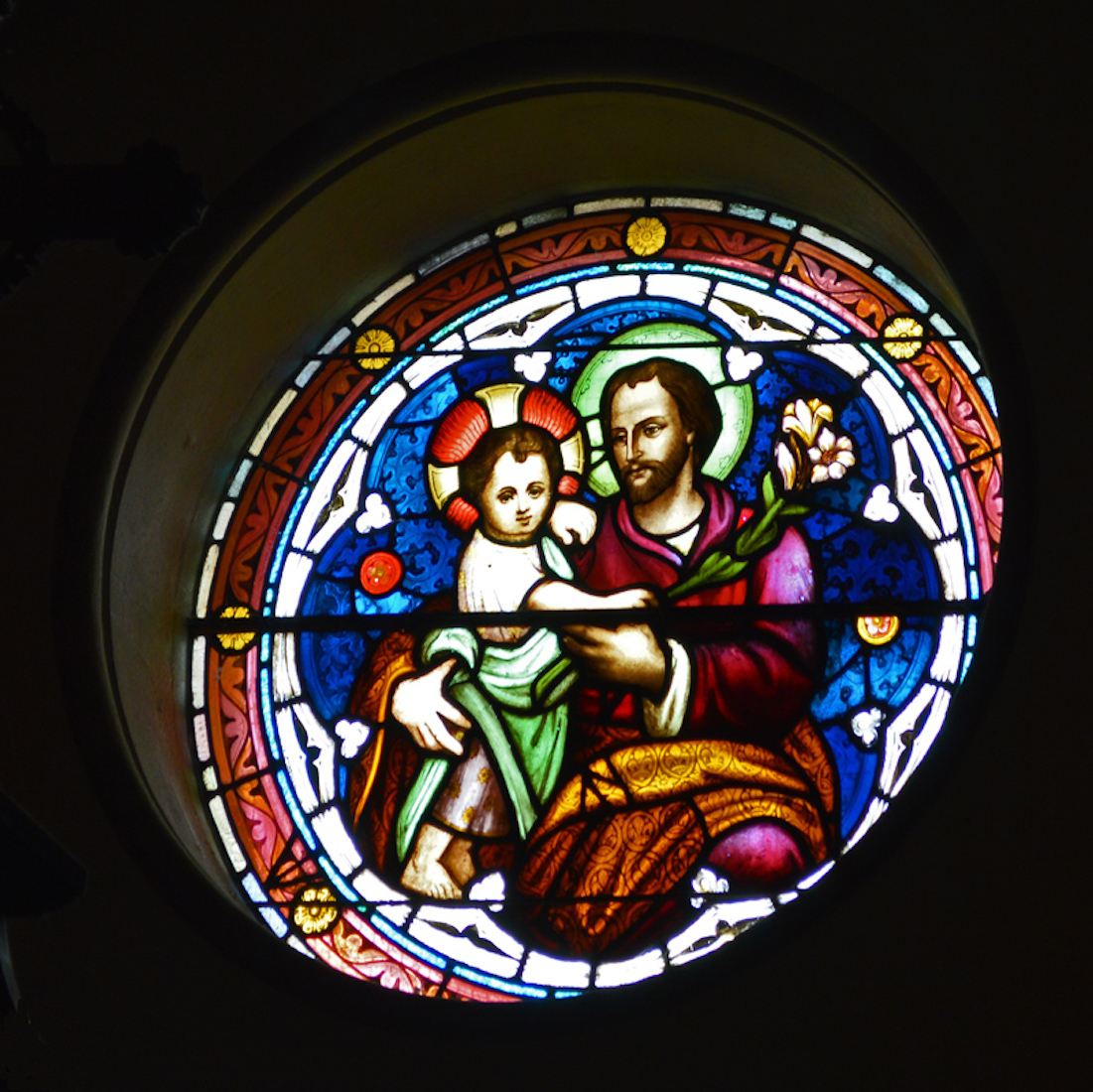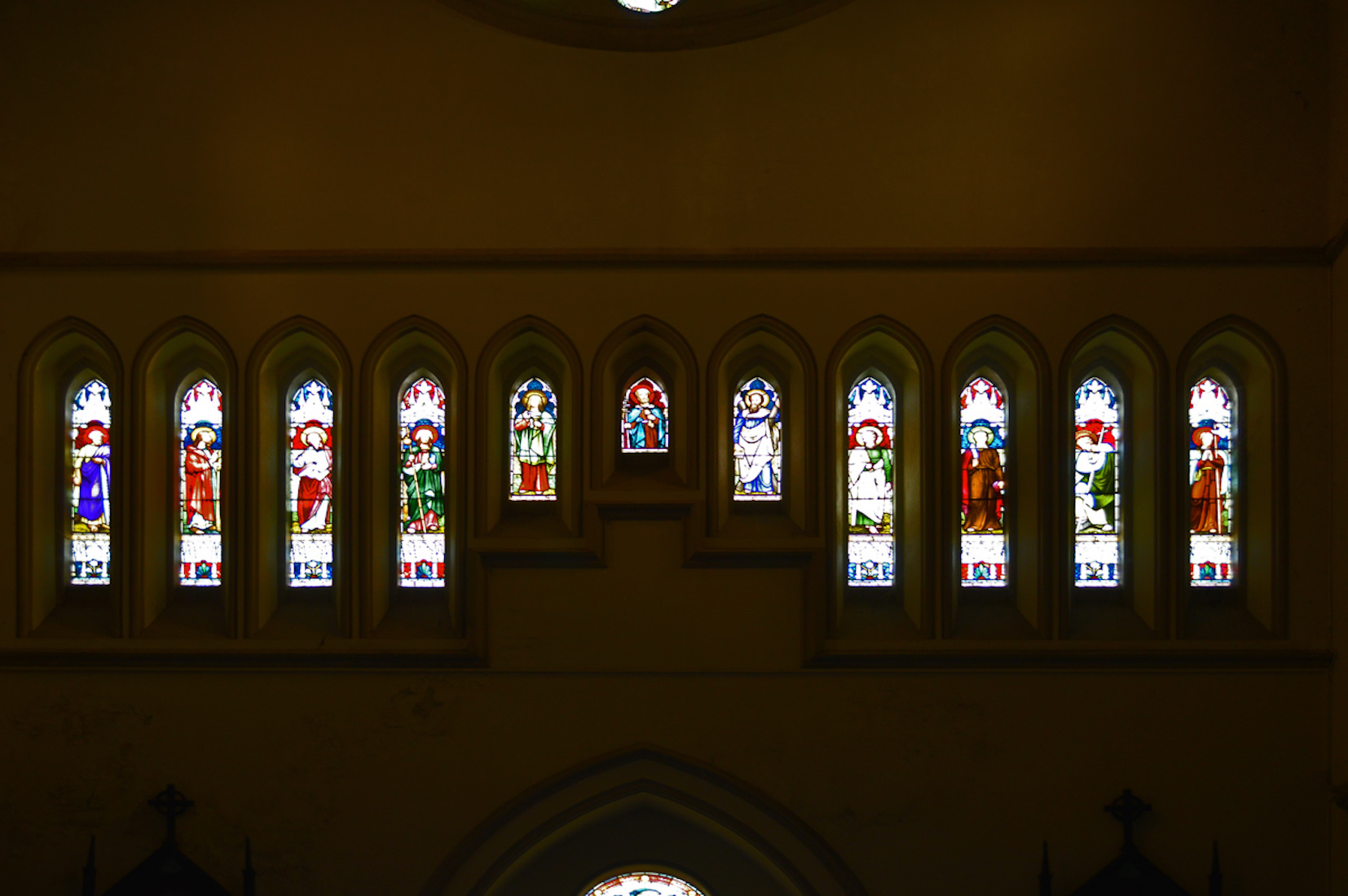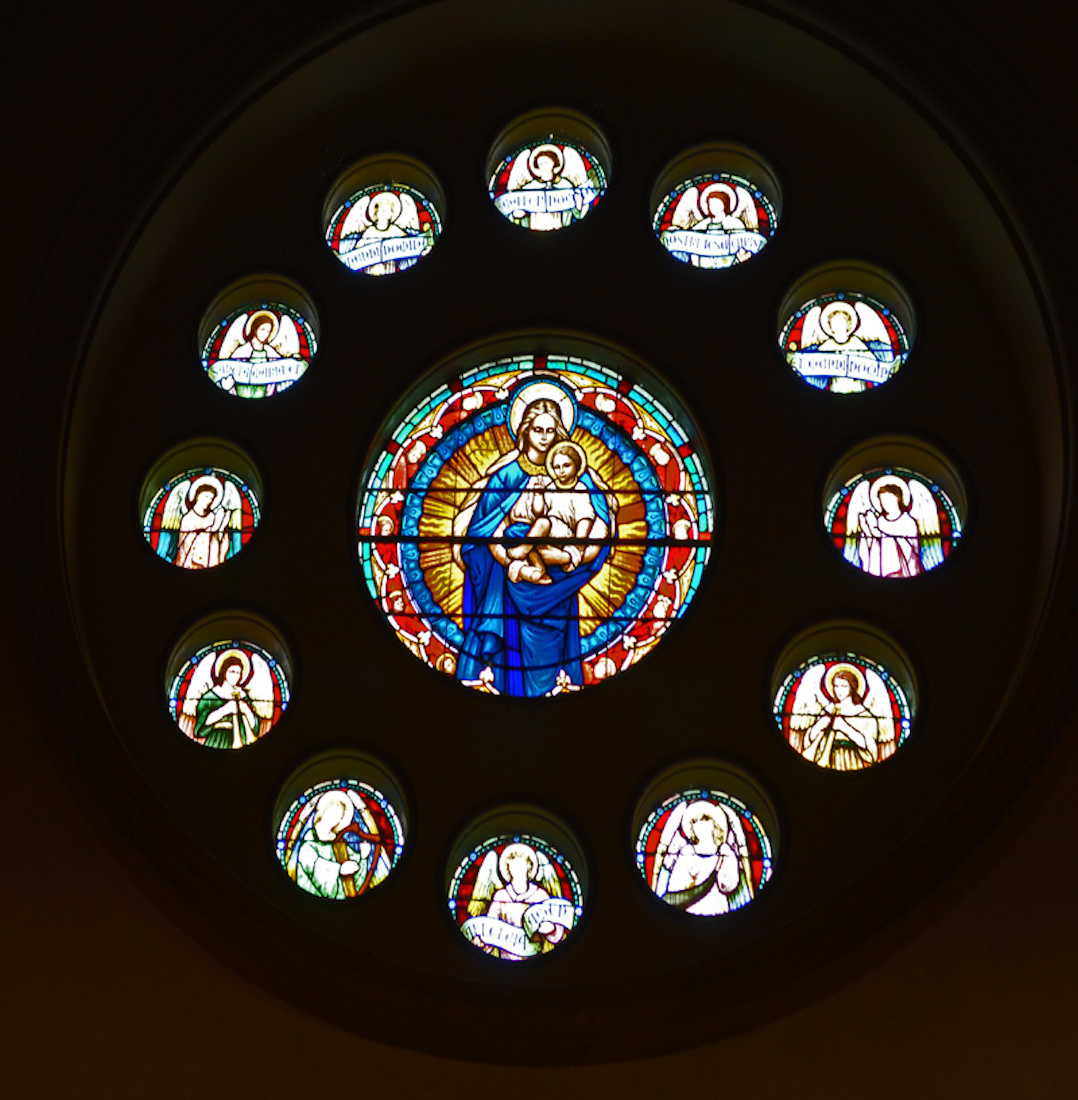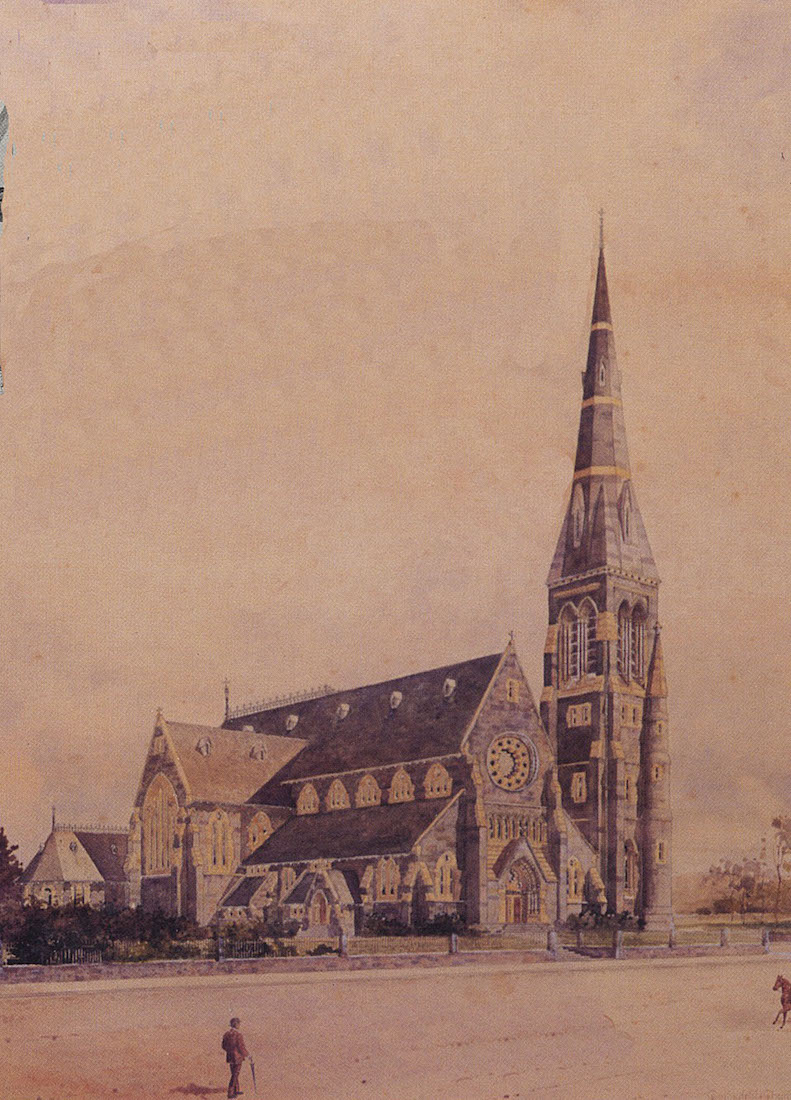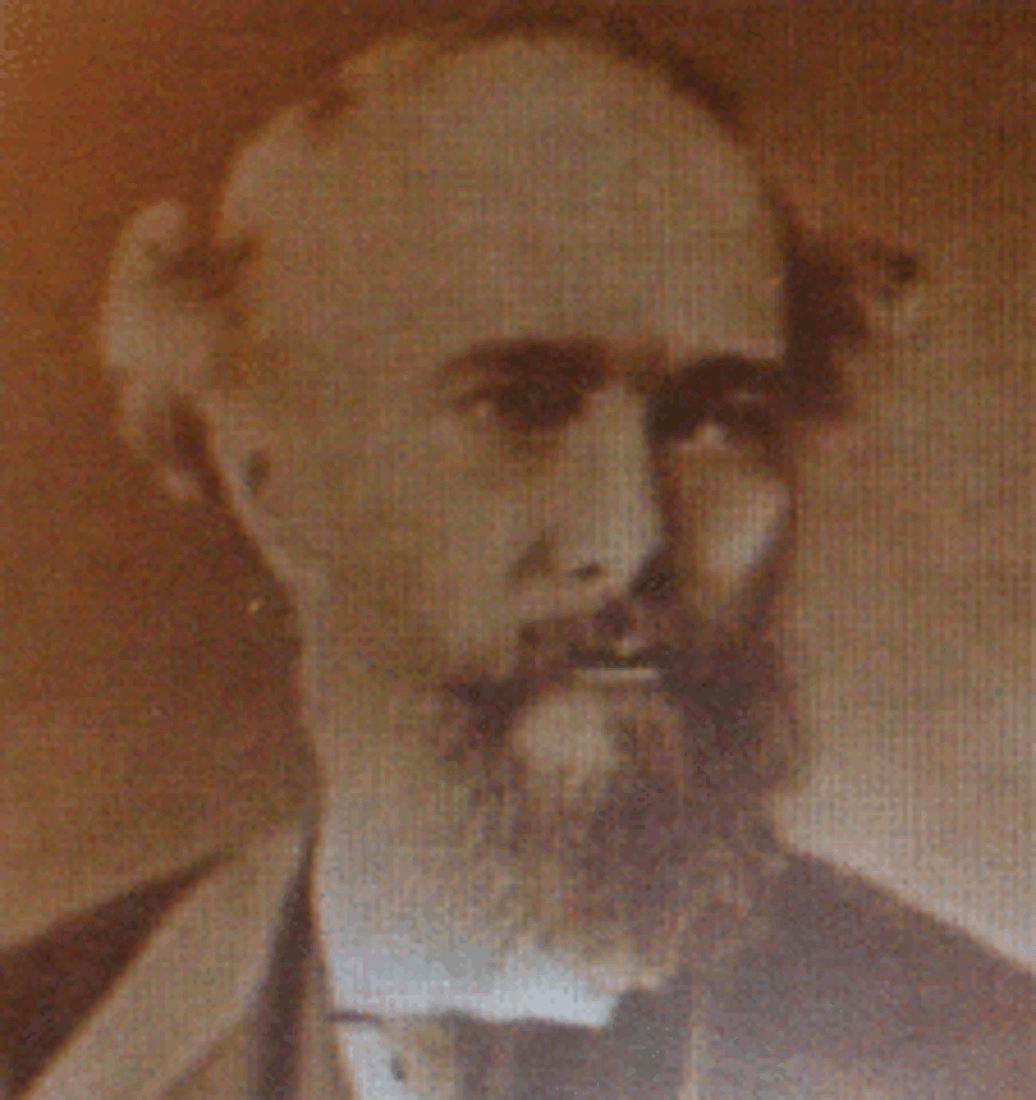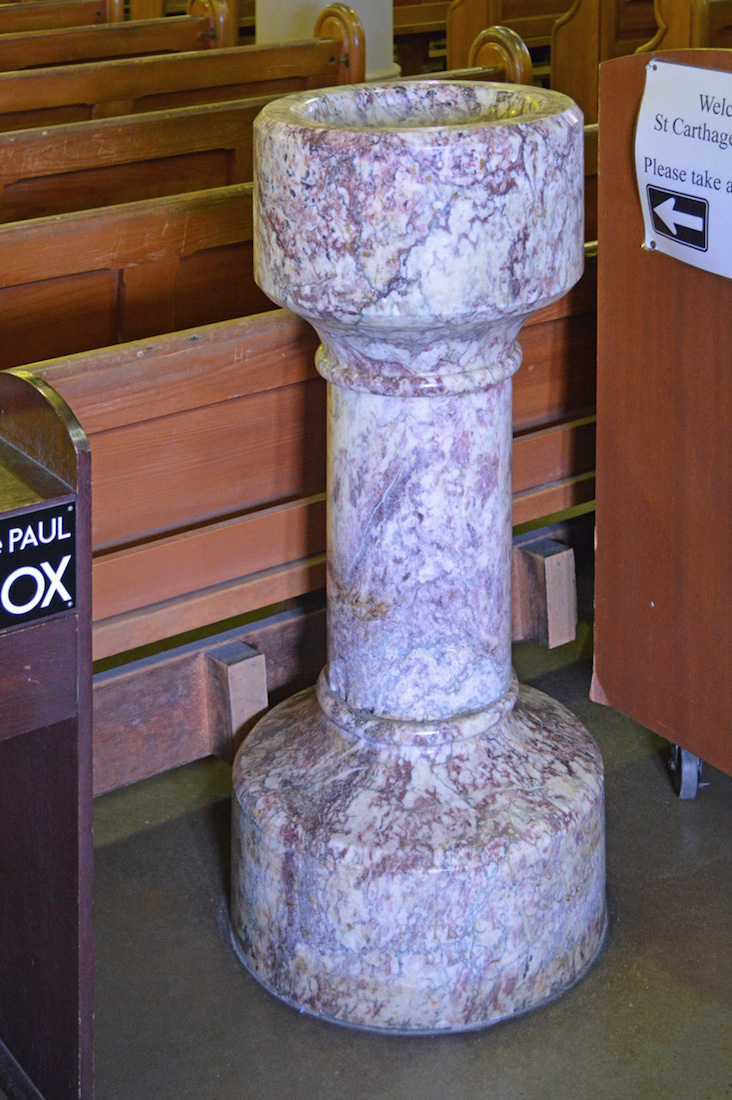
The use of holy water fonts is a very old tradition in the Catholic Church. The earliest were actually fountains and the Christian faithful would wash their hands and feet in the water before entering the church, likely derived from an older Jewish rite. There is a writing by Paulus Silentiarius from about 590 which describes people keeping water from one such fountain in pitchers in their homes. The use of holy water developed from the 4th through 9th century; the ninth century is when the custom of sprinkling the congregation at mass with water from a pot began. Stationary fonts in churches date from the 11th century, and gained popularity throughout the middle ages. Holy water fonts in a church would be attached to columns or walls, or put on top of pedestals. PLAN
62. WEST WALL
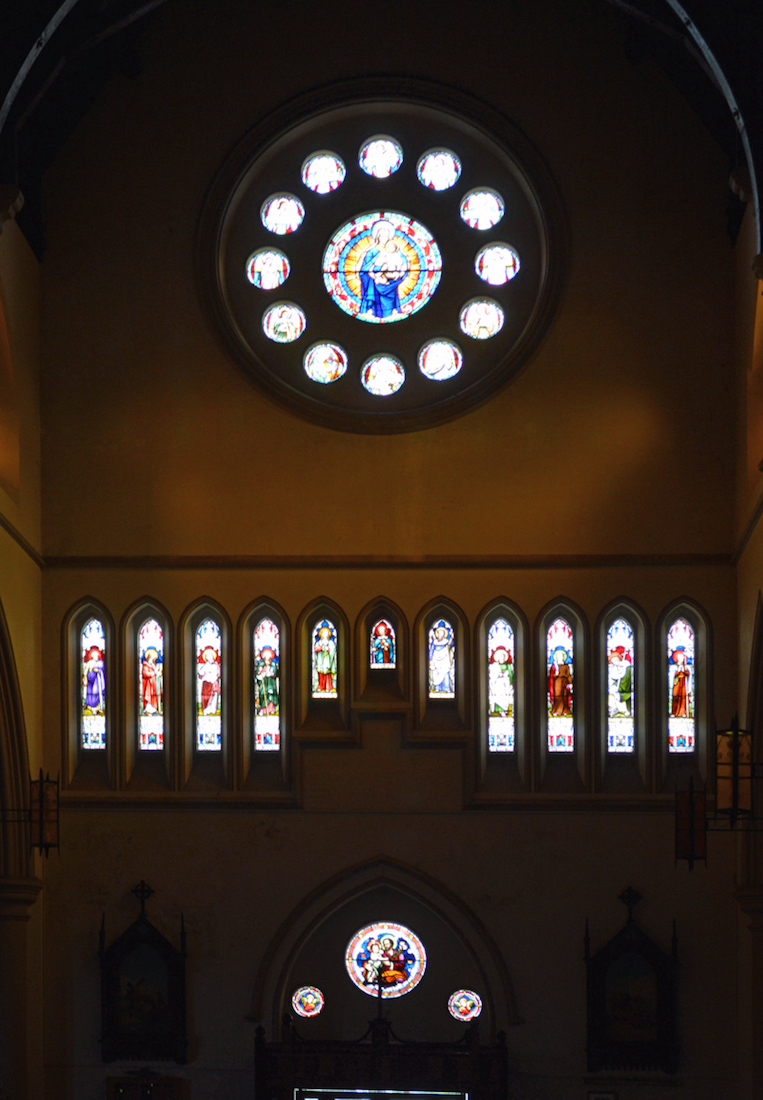
Stepping back into the central Nave, we view the West wall with its most unusual array of windows. Three round windows above the main doors, a horizontal strip of eleven lancet windows, and a large round window made up of 13 circular components. All these windows have stained glass.
63. WINDOW OVER DOOR
Above the West doors we find this lovely window portraying St Joseph and the Child Jesus. Joseph is carrying his beloved lilies! This window was in place when the Cathedral opened in 1907.
64. WEST STRIP WINDOWS
This strip of eleven stained glass windows features the apostles. It is difficult to distinguish the detail.
65. WEST ROUND WINDOWS
The round windows commemorate the Blessed Mother. The central window shows the Virgin Mary with the Baby Jesus. Six of the surrounding angels are playing musical instruments. The remaining six carry banners. The bottom one reads 'Alleluia Amen'. The top three read: Mundi Domina (Queen of the World); Mater Domina (Mother Queen); Nostri Jesu Christ (of our Jesus Christ). The remaining two appear to be linked: Sancta Maria et ... et Mundi Domina (Hail Mary ... Queen of the World).
66. ARCHITECT’S SKETCH
After some years of visiting priests, a certain Abbe Schurr laid the cornerstone of the first Catholic Church in Lismore in 1876. The church was named St Mary’s and occupied the site of the Lady Chapel in the present Cathedral. It was constructed of hardwood and cedar, hewn from the virgin forests. Seating was provided for a congregation of 200. When the future Bishop, Fr Jeremiah Doyle, came to Lismore the name was changed to St Carthage’s, after the great Irish monastic saint, educator, and Bishop of Lismore in Co. Waterford, Ireland.
67. WARDELL
A new larger church was completed in 1883 and enlarged in 1886. After being consecrated as Catholic Bishop of Grafton, Dr Doyle passed through Lismore, and was welcomed at St Carthage’s, now designated a Pro-Cathedral. In 1892 he announced his intention to build the present Cathedral. The well known firm of architects, Wardell (pictured) and Denning, had been commissioned to draw up plans – interestingly including a Spire which has yet to be built! (Wardell and Denning had designed St Patrick’s Cathedral in Melbourne.) The foundation stone was laid in 1892, but its present location is unknown.
68. LAYING THE FOUNDATION STONE
A year after the laying of the foundation stone, in 1893 a financial crisis gripped Australia and depression swept the country. Work on the Cathedral halted. In 1900 Bishop Doyle was designated as the Bishop of Lismore, but it was not until 1904 that excavations for the foundations began. Then in 1905 the wooden Pro-Cathedral, the Convent of the Presentation Nuns and St Mary’s High School were all destroyed by fire. St Carthage’s School on the corner of Dawson and Leycester Streets served as parish church for the next few years. The Cathedral was dedicated in 1907, but Bishop Doyle did not see the completion of the Cathedral – he died in 1909, the bell tower yet to be built.
69. BELL TOWER
Bishop Doyle had visited Ireland in 1908, and arranged for the purchase of a set of twelve bells from the Matthew Byrne Foundry, Dublin. To house the bells, the cathedral tower was built in 1911 by Bishop Carroll. The citizens of Lismore donated money for the bells to honour the memory of Bishop Doyle. The chimes were consecrated in 1911, and the tower was blessed and officially opened. Another work which received the attention of Bishop John Carroll was the installation of the pipe organ. This magnificent instrument, built by Mr Dodd of Adelaide was installed in 1912. In 1919 the debt on St Carthage’s was liquidated, and the Church was consecrated as the Mother Church of the Diocese. This completes our tour of the Cathedral.
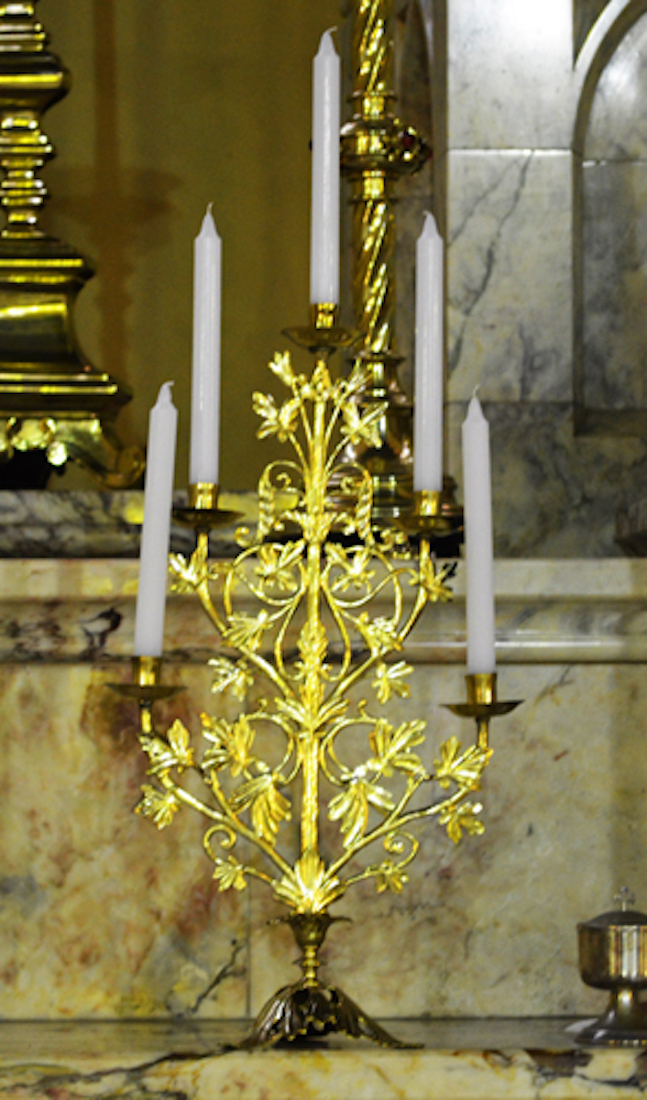
CONCLUSION
I hope you have enjoyed visiting the Cathedral of St Carthage, Lismore with me. I found it a very interesting visit, and we spent the night at a motel almost in the Cathedral’s shadow!
I am happy to receive constructive comments or corrections concerning this website. The best websites are the ones which have no errors! I am grateful to my wife Margie who came to Lismore with me, and who has proof-read these pages.
I wish also to thank Bishop Geoffrey Jarrett who kindly informed me about the Cathedral renovations.
The link for the Cathedral website is:
http://www.lismorediocese.org/page/Cathedral
The photographs which appear on this site can also be found in higher resolution at:
https://www.flickr.com/photos/paulscottinfo/albums/
Site created 05 / 2013 ; modified 1 / 2016 ; reformatted 11 / 2020
Paul Scott

